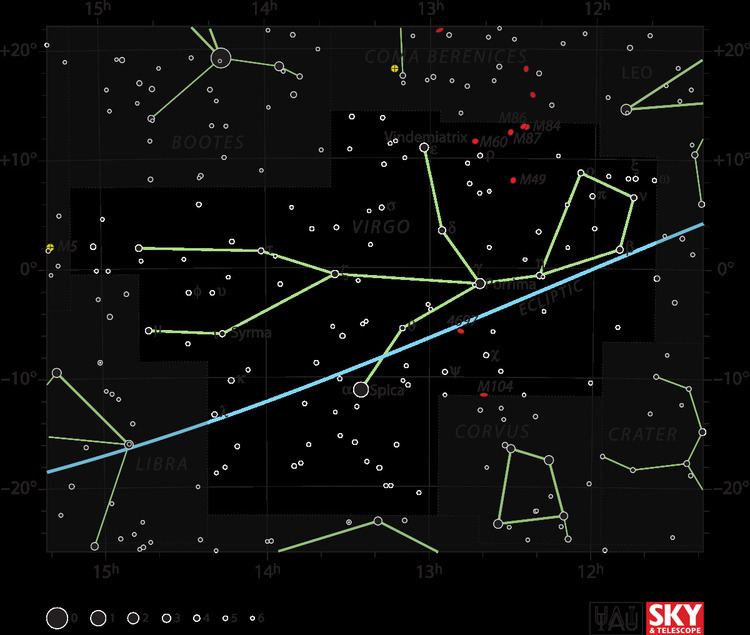Magnitude 4.52 Apparent magnitude (V) 4.52 | Constellation Virgo | |
 | ||
Semi-amplitude (K2)
(secondary) 7001273080000000000♠27.308±0.067 km/s Luminosity 7001125800000000000♠12.58±0.16 L☉ People also search for Phi Virginis, Kappa Virginis, Mu Virginis | ||
Lambda Virginis (λ Vir, λ Virginis) is a binary star system in the zodiac constellation of Virgo. With an apparent visual magnitude of 4.5, it is bright enough to be seen with the naked eye. It has the traditional name Khambalia (from old Coptic meaning 'Crooked Claw'). In China, 亢宿 (Kàng Xiù), meaning Neck, refers to an asterism consisting of this star, κ Virginis, ι Virginis and κ Virginis. Consequently, λ Virginis itself is known as 亢宿四 (Kàngsusì, English: the Fourth Star of Neck.)
Based upon parallax measurements, the Lambda Virginis system is about 173 light years away from the Sun. It is a double-lined spectroscopic binary with an orbital period of 206.7 days and an eccentricity of 0.0610. The semi-major axis has an angular size of 0.02″, which, at the distance of this system, is equivalent to a physical span of 7000105000000000000♠1.050±0.007 AU. The orbit is inclined by an angle of 110° to the line of sight from the Earth. Tidal theory predicts that eventually the orbit of the stars will circularize and their rotation rates will become synchronized with their orbital motion. However, this will occur over a time scale of more than 1.2 billion years, whereas their estimated age is 935 million years.
The combined spectra of the components has a stellar classification of A1V, which matches an A-type main sequence star. The two components have magnitudes of +5.0 and +5.6. Both components are Am stars, indicating they appear chemically peculiar. The primary appears to be rotating around 3.5 times faster than the secondary.
